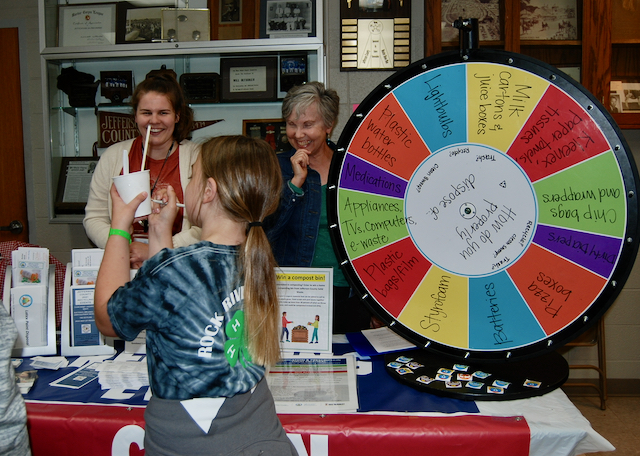By Anita Martin
It’s a blessing as well as a responsibility, says Jordan E. Rutter, M.Sc., when discussing the ins and outs of feeding backyard birds.
A lifetime birder who started banding birds at the age of 10, Rutter has worked with both the American Bird Conservancy and the Smithsonian Migratory Bird Center and also co-founded Bird Names for Birds. She and other bird experts stress the importance of adhering to recommended bird-feeding practices and devoting regular attention to bird feeders for our own health, and the health of our fine feathered friends.
The psychological benefits of bird watching include positive impacts on the brain, reducing stress and inducing calmness and a sense of well-being.
Keeping bird feeders clean is critical to helping prevent potential wildlife deaths, specifically from salmonella, and possibly, the current circulating H5N1 avian virus strain and its variants as well.
In 2021, state wildlife biologists in more than a dozen states in a number of U.S. regions reported salmonellosis which lead to bird deaths. The CDC reported 29 human illnesses in 12 states linked to birds, including 14 hospitalizations, and because the species which fell ill are prevalent throughout the U.S., the outbreak may have even been more widespread.
The birds impacted were largely American goldfinches, cardinals, chickens, common redpolls, other finches, pine siskins, red-winged blackbirds, and sparrows. Residents in a number of states were advised to temporarily take feeders down during the winter-spring 2021 salmonella outbreak.
How common is salmonellosis? The bacteria occur naturally throughout the year, and are also found on birdfeeders where birds gather and compete in feeding sites. Experts attribute more than 20% of songbird deaths to salmonellosis, an illness which may or may not result in obvious signs of infection. It appears the incidence of songbird deaths due to salmonella has increased over the past 20 years.
According to Colorado Parks and Wildlife, diseases which may be spread at birdfeeders “can be controlled and prevented by proper use and regular cleaning of feeders (source: https://cpw.state.co.us/Documents/Viewing/Bird-Feeder-Diseases-Fact-Sheet.pdf),” namely, pigeon paramyxovirus and avian pox, in addition to salmonellosis. Pets that are in contact with sick birds or infected feces or contaminated birdseed also are at risk.
During last month’s ZHOU (Zoonoses and One Health Updates) CDC webinar, Dr. Sonia Hernandez, DVM and Ph.D. presented, “Salmonella spp: Persistence on surfaces/bird feeders.” Professor of Warnell School of Forestry and Natural Resources and the Southeastern Cooperative Wildlife Diseases Study/College of Veterinary Medicine at University of Georgia, she said 2,500 distinct serotypes of Salmonella exist and are a major cause of diarrhea in people and animals. They have resulted in “explosive wild bird mortality events in the U.S., Canada and the United Kingdom,” Dr. Hernandez explained, and went on to say in some areas, may pose an “underestimated human health concern.” The peak time for salmonella in birds is February through May, she stated.
Dr. Hernandez emphasized it’s especially critical during the cooler month to wear gloves when cleaning birdfeeders, wash the feeders first with soap and water, rinse thoroughly to remove soap residue, and then rinse with a bleach solution. Additionally, she recommends using bottle brushes “to get to all the nooks and crannies” of the birdfeeders.
How often should we be cleaning our birdfeeders? Out of an abundance of caution, some sources recommend weekly cleaning to minimize risks to birds, other wildlife, and humans.
Cleaning recommendations
The CDC recommends soaking feeders in a nine-parts water to one-part bleach solution for 10 minutes. Let the feeder or birdbath fully dry before replenishing with water or bird food. Wash hands thoroughly after carefully removing gloves.
What about HPAI avian influenza and possible risks associated with bird feeding? In the latest (March 22, 2023) recommendations, Dr. Julianna Lenoch, who directs the USDA APHIS National Wildlife Disease Program, advises poultry owners to “take down wild birdfeeders or keep them well away from their captive flock.”
Additionally, Dr. Lenoch calls on anyone keeping nest boxes and/or monitoring waterfowl or raptor nests (such as Wood Duck, Common Merganser, Canada Goose, American Kestrel, or Barred Owl), “to wear gloves, change or wash gloves and disinfect equipment between nest boxes, wear a mask when cleaning out nest boxes, and change clothes and footwear before visiting domestic poultry.”
The following links offered more information about the ins and outs of feeding birds: https://www.cdc.gov/onehealth/zohu/2023/march.html and https://www.allaboutbirds.org/news/avian-influenza-outbreak-should-you-take-down-your-bird-feeders/# .
Let’s enjoy the connection to nature, and the beauty and serenity watching birds brings, and let’s do it in a way that ensures the health of us and our feathered friends.
Anita Martin is a longtime freelance journalist whose work has appeared in such publications as the Waterloo/Marshall Courier, The Madison Times, Agri-View, Dane County Lifestyles (formerly 50 Plus Lifestyles newsmagazine), Verona Press and Wisconsin Woman magazine, covering such topics as health and wellness, and women’s and multicultural issues. More recently, she has developed interest in such topics as environmental issues, avian influenza and other zoonotic diseases, and public health.

Anita Martin, at right, volunteers at the Jefferson County Fair Clean Sweep booth in 2021. File photo/Kim McDarison.
This post has already been read 881 times!